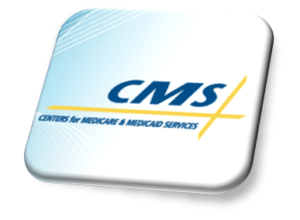 The need for emergency preparedness is never more obvious than after disaster strikes and tests underlying crisis systems. And of course disaster—natural and man-made—can pose a dire risk to healthcare patients in particular.
The need for emergency preparedness is never more obvious than after disaster strikes and tests underlying crisis systems. And of course disaster—natural and man-made—can pose a dire risk to healthcare patients in particular.
It’s this thinking that led the Centers for Medicare and Medicaid Services (CMS) to put the finishing touches on a rule requiring participating healthcare providers to have appropriate emergency preparedness plans in place. The rule is intended to “increase patient safety during emergencies, and establish a more coordinated response to natural and man-made disasters.”
Patrick Conway, M.D., MSc is Deputy Administrator and Chief Medical Officer with the CMS. “Situations like the recent flooding in Baton Rouge, Louisiana, remind us that in the event of an emergency, the first priority of health care providers and suppliers is to protect the health and safety of their patients,” he said. “Preparation, planning, and one comprehensive approach for emergency preparedness is key. One life lost is one too many.”
What’s expected of providers
Under the rule, healthcare providers participating in Medicare or Medicaid will be required to comply with four best practice industry standards:
1) Emergency plan.
Providers must use risk assessments to come up with a crisis strategy that employs an “all-hazards approach focusing on capacities and capabilities.”
2) Policies and procedures.
New stipulations, based on the emergency plan’s risk assessment, must be created and implemented.
3) Communication plan.
A strategy for communication that adheres to federal and state law must be created and maintained. Patient care is paramount.
4) Training and testing program.
The emergency plan must be routinely tested through drills and exercises, and it must be reinforced and updated through annual training.
Responsibility doesn’t end with hospitals
Dr. Nicole Lurie is Health and Human Services (HHS) assistant secretary for preparedness and response. “As people with medical needs are cared for in increasingly diverse settings, disaster preparedness is not only a responsibility of hospitals, but of many other providers and suppliers of healthcare services,” she said. “Whether it’s trauma care or long-term nursing care or a home health service, patients’ needs for healthcare don’t stop when disasters strike; in fact, their needs often increase in the immediate aftermath of a disaster.”
The impetus for the rule was the CMS review of current emergency plans in place for providers and suppliers and identifying gaps in those plans. The agency stated: “CMS found that regulatory requirements were not comprehensive enough to address the complexities of emergency preparedness. For example, the requirements did not address the need for: (1) communication to coordinate with other systems of care within cities or states; (2) contingency planning; and (3) training of personnel.”
Is the estimated bottom line unrealistic? The AHA thinks so
The American Hospital Association (AHA) is not alone in expressing concern over the actual price-tag needed to develop the plans the CMS is requiring. The CMS has estimated that the cost for over 80,000 providers would be $225 million. The AHA said that the CMS might have “significantly underestimated the burden and cost associated with complying with this rule.”
The original rule was tweaked slightly in this final version, most notably in the removal of requirements for extra generator testing and in the adding in of some flexibility regarding annual testing.
For more information/questions regarding any legal matters, please email [email protected] or call 310.203.2800.